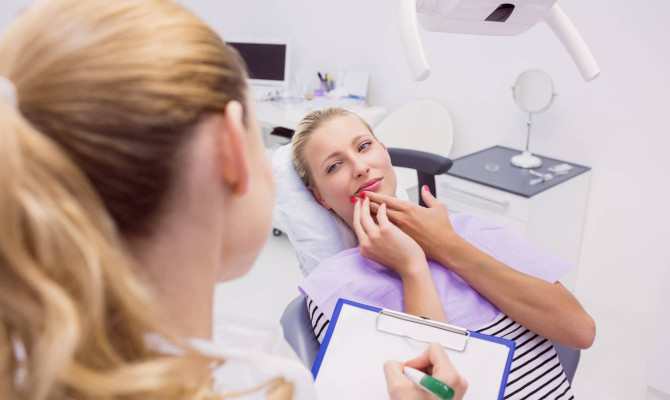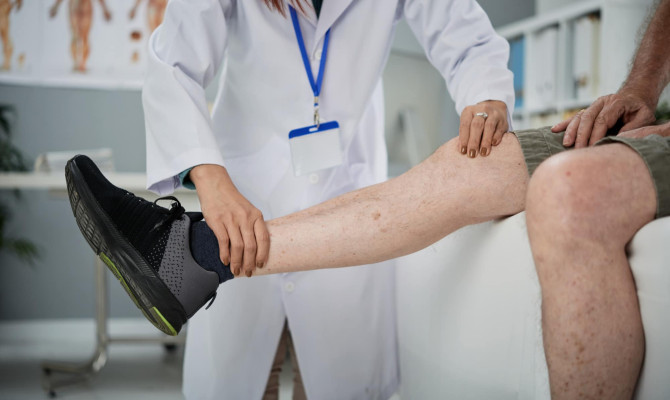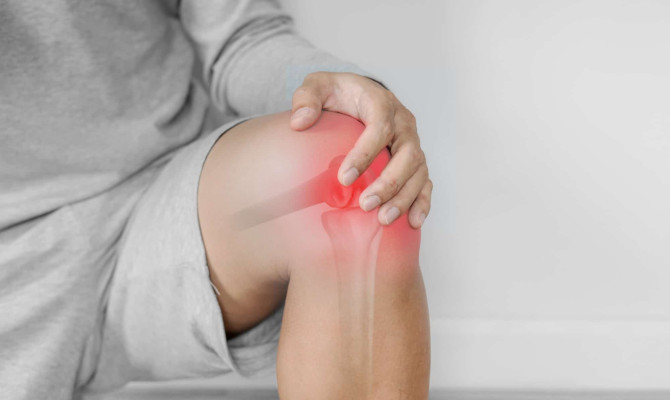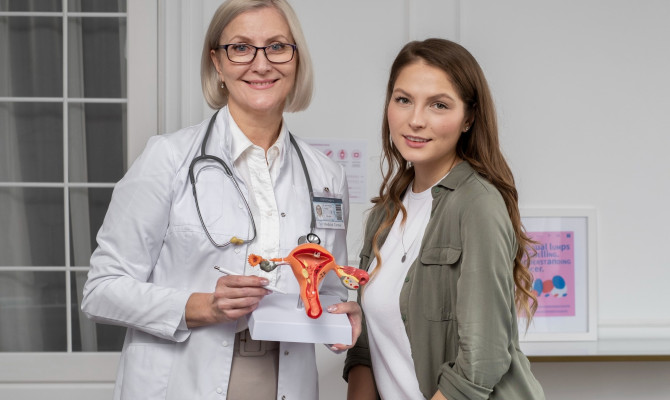Actinic Keratosis vs. Seborrheic Keratosis: Understanding The Differences

- Skin Cancer
- 20 Sep 2023
Overview
Actinic Keratosis & Seborrheic Keratosis
Skin conditions can often be confusing, especially when they share similar-sounding names or comparable symptoms. Actinic keratosis (AK) and seborrheic keratosis (SK) are two such dermatological conditions that are frequently encountered. While they might seem alike at first glance, they have distinct characteristics, causes, and implications for skin health.

In this article, we will delve into actinic keratosis and seborrheic keratosis, providing a comprehensive comparison to help you understand the differences between these conditions. We will explore all aspects, from their causes and symptoms to diagnosis, treatment options, and prevention strategies. You will be equipped to recognize these, seek proper medical attention, and take steps to maintain healthy skin.
Introduction
Actinic Keratosis vs. Seborrheic Keratosis
What is actinic keratosis?
- Actinic keratosis, also known as solar keratosis or senile keratosis, is a common precancerous skin condition characterized by the formation of dry, scaly, and rough patches or lesions on the skin surface.1 Introduction| Researched based study from National Library of Medicine
What is seborrheic keratosis?
- It is a benign and non-cancerous skin condition characterized by the development of brown, black, or pale growth or lesions on the skin surface. 2Introduction| Researched based study from National Library of Medicine
Symptoms

Symptoms of Actinic Keratosis & Seborrheic Keratosis
Symptoms of actinic keratosis
- Dry, scaly patches
- Rough texture
- Color changes
- Itchiness or discomfort
- Size and shape
- Location
Dry scaly patches
- It often appears as dry scaly patches on the surface.
Rough texture
- These can feel rough and may be easier to detect by touch.
Color changes
- They may vary in color, typically ranging from pink to reddish brown and can blend in with the surrounding skin.
Discomfort
- In some cases, it may cause itching, burning, or tenderness.
Size and shape
- The lesions can vary in length and be as small as a pinhead or as large as a coin. They often have an irregular shape.
Location
- Common areas for development include the face, ears, scalp, neck, back of the hands, forearms, and other sun-exposed areas.1 Symptoms| Researched based study from National Library of Medicine
Symptoms of seborrheic keratosis
- Raised lesions
- Varied colors
- Waxy or stuck on appearance
- Smooth surface
- Non-symptomatic
- Common location
Raised lesions
- They typically grow from the skin’s surface and may resemble warts or barnacles.
Varied colors
- They come in various colors, including brown, black, tan, or light grey. Multiple colors can sometimes be present in one lesion.
Waxy or “stuck-on” appearance
- They often have a waxy, scaly, or stuck-on appearance. They look like they could be quickly scrapped off the skin.
Smooth surface
- It has a softer texture and is not typically dry or scaly.
Non-symptomatic
- They are generally not associated with itching, pain, or discomfort unless they become irritated due to friction or clothing.
Typical locations
- They can appear on any body part but are more common on the face, chest, shoulders, and back.2Symptoms| Researched based study from National Library of Medicine
Causes
Causes for Actinic Keratosis & Seborrheic Keratosis
Actinic keratosis causes
UV radiation exposure
- Prolonged and cumulative exposure to ultraviolet (UV) radiation from the sun or tanning beds is the primary cause.
- UV rays can damage the skin cells over time, leading to the development of these lesions.1Causes| Researched based study from National Library of Medicine
Seborrheic keratosis causes
Genetic factors
- Genetic predisposition is believed to play a role in the development. Individuals with a family history are more likely to develop these lesions.
Aging
- It is more common in older individuals. It tends to develop as people age, with most cases appearing in middle-aged or older adults.2Causes| Researched based study from National Library of Medicine
Risk Factors
Risk factors for Actinic Keratosis & Seborrheic Keratosis
Fair skin
- People with light or fair skin are at a higher risk of developing both conditions. Lighter skin is more susceptible to UV damage.
Sun exposure
- While sun exposure is a direct cause of actinic keratosis, it can also contribute to the development of seborrheic keratosis, especially in individuals who have had significant sun exposure throughout their lives.
Geographic location
- Living in regions with high levels of UV radiation, such as sunny climates increase the risk.
Immunosuppression
- Individuals with weak immune systems, such as those with organ transplant recipients or those with certain medical conditions may have an increased risk of developing both conditions.
Previous skin damage
- Prior skin damage, including sunburns and injuries, can elevate the risk of actinic keratosis and may influence the development of seborrheic keratosis.
It is important to note that UV exposure is a common risk factor for both conditions. AK is considered precancerous and has a stronger association with sun exposure, while SK is primarily a benign skin growth related to genetic factors and aging. 1 Risk Factors| Researched based study from National Library of Medicine,2 Risk Factors| Researched based study from National Library of Medicine
Pathology
Actinic Keratosis & Seborrheic Keratosis pathology
Actinic keratosis pathology
- AK is characterized by the presence of abnormal keratinocytes, which are the predominant cell type in the epidermis. They often display irregularities in size, shape, and organization. If left untreated, it could develop into squamous cell cancer.
Seborrheic keratosis pathology
- It comprises various types of epidermal cells, including keratinocytes, sebocytes, and other skin cell types. It does not exhibit cellular atypia or dysplasia.
Diagnosis
Diagnosis of Actinic Keratosis & Seborrheic Keratosis
How is actinic keratosis diagnosed?
Visual examination
- Dermatologists typically diagnose AK through a visual examination of the skin. They look for dry, scaly patches, rough textures, and abnormal coloration, often using a magnifying lens or dermatoscopy for a closer inspection.
Biopsy
- Sometimes, a dermatologist may perform a skin biopsy to confirm the diagnosis. This involves taking a small tissue sample from the affected area and examining it under a microscope.4Diagnosis| Researched based study from National Library of Medicine
How is seborrheic keratosis diagnosed?
Clinical assessment
- It is usually diagnosed based on its characteristic appearance. Medical professionals can identify SK by its raised, waxy, and often multicolored lesions without needing a biopsy.
Biopsy (optional)
- While they are less common for SK, they may be conducted in unusual or typical cases to rule out other skin conditions.3Diagnosis| Researched based study from National Library of Medicine
Importance of medical evaluation
Accurate diagnosis
- It is essential to diagnose both conditions accurately. While the appearance of these lesions can provide clues, other skin conditions may mimic them.
Treatment
Treatment for Actinic Keratosis & Seborrheic Keratosis
Once diagnosed, a medical professional can recommend suitable treatment options, ranging from topical creams to cryotherapy or laser therapy. Being benign may not require treatment but can be addressed if it causes cosmetic concerns.
Actinic keratosis treatment
Topical medications
- Dermatologists often prescribe topical creams, gels or solutions containing ingredients like imiquimod, 5-fluorouracil, or diclofenac. These are applied directly to the lesions and work to destroy abnormal skin cells.
Cryotherapy
- This involves freezing the lesions using liquid nitrogen. The frozen tissue eventually peels off, promoting the growth of healthy skin.
Curettage and electrodessication
- In this procedure, the dermatologist scripts the lesions with the curette (a surgical instrument) and then uses electrodessication (electric current) to destroy any remaining abnormal cells.
Photodynamic therapy
- It involves the application of a photosensitizing agent followed by exposure to a specific type of light. This activates the medication and destroys AK cells.4Treatment| Researched based study from National Library of Medicine
Seborrheic keratosis treatment
No treatment (observation)
- It does not require treatment in many cases as they are benign and typically asymptomatic. They can be left alone, especially if they don’t cause cosmetic concerns or discomfort.
- Seborrheic keratosis lesions sometimes peel off or become dislodged on their own. However, it is essential not to try that intentionally by yourself.
Cryotherapy
- It can be used to remove escalations if desired for cosmetic reasons or if they become irritated.
Electrocautery
- This involves burning off SKs using an electric current. This is another option for removal if necessary.
Laser therapy
- Laser can be used to vaporize or remove the lesions for cosmetic reasons.2Treatment|Researched based study from National Library of Medicine
Differences in treatment approaches
- AK is considered precancerous, so treatment is essential to prevent potential progression to skin cancer. Treatment options aim to destroy or remove abnormal cells.
- SK is benign and harmless, so treatment is typically optional and is often chosen for cosmetic reasons if it becomes bothersome or irritated. Many lesions can be safely left untreated.
Complications
Complications of Actinic Keratosis & Seborrheic Keratosis
Complications associated with actinic keratosis
Progression to skin cancer
- The most significant difficulty is its potential to progress to a form of skin cancer, typically squamous cell carcinoma.
- Although not all lesions become cancerous, some can over, especially if left untreated or if risk factors persist.
Skin discomfort
- It can cause itching, burning, and tenderness, which may affect the quality of life. 1Complications| Researched based study from National Library of Medicine
Complications associated with seborrheic keratosis
Cosmetic concerns
- While they are benign, their appearance can be a source of cosmetic problem for some people.
- Large or numerous lesions, invisible areas of the body may lead to self-esteem issues.
Irritation or bleeding
- It can become irritated due to friction from clothing or jewelry, which may lead to itching or, in rare cases, bleeding. 2Complications| Researched based study from National Library of Medicine
Prognosis
Prognosis of Actinic Keratosis & Seborrheic Keratosis
Actinic keratosis prognosis
- With appropriate treatment and preventive measures, the prognosis is generally reasonable.
- If detected and managed early, it can often be resolved without progressing to skin cancer.
- However, regular skin monitoring and sun protection are crucial to preventing recurrence. 5Prognosis| Researched based study from National Library of Medicine
Seborrheic keratosis prognosis
- They are benign growth and do not pose a cancer risk.
- The prognosis is excellent, most of them remain stable over time, and they typically, do not require the exact location once removed. 6Prognosis| Researched based study from National Library of Medicine
FAQs
Frequently Asked Questions on Actinic Keratosis & Seborrheic Keratosis
Is actinic keratosis a BCC or SCC?
- It is a precancerous skin condition that is neither basal cell carcinoma (BCC) nor squamous cell carcinoma (SCC).
- However, if left untreated, it can potentially develop into one of these more severe skin cancers.
What is another name for seborrheic keratosis?
- Another name is “senile wart” or “senile keratosis.”
Is actinic keratosis permanent?
- It is not permanent because it can be treated and resolved. However, if left untreated, it can progress.
Any feedback on this article?
 This Articles content was accurate
This Articles content was accurate Very Informative Article
Very Informative Article I have a question or a comment
I have a question or a comment
 This article contains inaccurate content
This article contains inaccurate content This article was not helpful
This article was not helpful I have a question or a comment
I have a question or a comment
We appreciate your helpful feedback!
Checkout our social pages
References
-
National Library of Medicine
Introduction | Symptoms | Causes | Risk Factors | Complications
-
National Library of Medicine
Introduction | Symptoms | Causes | Risk Factors | Complications
-
National Library of Medicine
Diagnosis | Treatment
-
National Library of Medicine
Diagnosis | Treatment
-
National Library of Medicine
Prognosis
-
National Library of Medicine
Prognosis





































